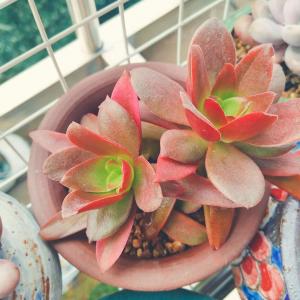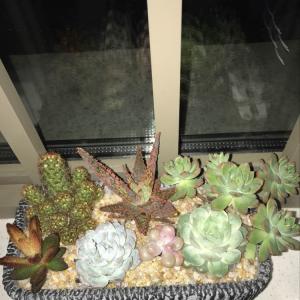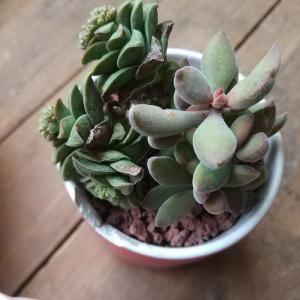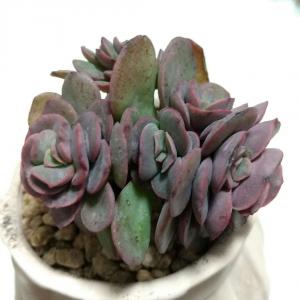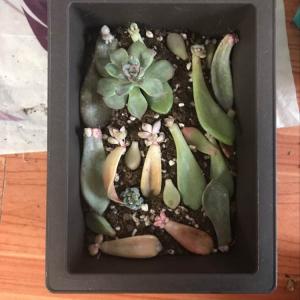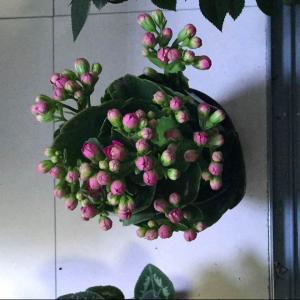文章
Miss Chen
2017年12月26日

Description: This perennial plant is 2-4' tall and unbranched, except for some flowering side stems near the apex. The central stem and side stems are covered with long white hairs. The opposite leaves are up to 8" long and 2" across, and light or yellowish green. Their bases surround the central stem and merge together (perfoliate). In shape, they are lanceolate with long narrow tips and serrate margins. There is a conspicuous network of veins, particularly on the lower leaf surface. This lower surface is also pubescent. Some of the upper leaves near the inflorescence(s) are much smaller in size and sessile. The upper stems terminate in clusters of white flowerheads, spanning about 2-8" across. Each flowerhead is about 1/6" (4 mm.) across and consists of about 15 disk florets. Each disk floret has 5 spreading lobes and a long divided style, in the manner of other Eupatorium spp. The blooming period is late summer to early fall, which typically lasts about 1-2 months for a colony of plants. There is a pleasant floral scent. The florets are replaced by achenes with small tufts of hair – they are dispersed by the wind. The root system is fibrous and produces rhizomes in abundance. Common Boneset typically forms vegetative colonies.
Cultivation: The preference is full or partial sun, and wet to moist conditions. The soil should contain considerable organic material so that it can retain moisture. This plant can withstand flooded conditions for short periods of time, but it is not really aquatic. The foliage appears to be little bothered by pests and disease.
Range & Habitat: The native Common Boneset has been reported from most counties of Illinois, and it is fairly common (see Distribution Map). However, this plant appears to be somewhat less common than either Eupatorium serotinum (Late Boneset) and Eupatorium altissimum (Tall Boneset). Habitats include openings in floodplain forests, poorly drained areas of black soil prairies, and various kinds of wetlands, including marshes, bogs, fens, seeps, edges of rivers, and sand flats along Lake Michigan. This plant also occurs in or near roadside ditches. Generally, it doesn't stray far from wetland areas of one kind or another.

Faunal Associations: The nectar or pollen of the flowers attracts many kinds of insects, including bees, flies, wasps, butterflies, and beetles. In particular, many kinds of unusual flies and wasps are attracted to the flowers because of the accessibility of the nectar. The caterpillars of various moth species are known to feed on various parts of Common Boneset, including Haploa clymene (Clymene Moth), Phragmatobia lineata (Lined Ruby Tiger Moth), Papaipema cataphracta (Burdock Borer Moth), Schinia trifascia (Three-Lined Flower Moth), Chlorochlamys chloroleucaria (Blackberry Looper Moth), and Semiothisa continuata (Geometrid Moth sp.). The small seeds appear to be of little interest to birds and other fauna, although they are occasionally eaten by the Swamp Sparrow. Mammalian herbivores display little interest in Common Boneset as a food source because of the bitterness of the foliage.

Photographic Location: The photographed plants were growing at the bottom of a drainage ditch amid horsetails near the Windsor Road Prairie in Champaign, Illinois. This portion of the drainage ditch does not have standing water during dry weather (i.e., a seasonal wetland).
Comments: Common Boneset has interesting foliage and fragrant flowers. It tolerates flooded conditions better than many other Boneset species. It can be distinghished from these other species by the perfoliate leaves that surround the central stem. The other species have opposite leaves that are sessile or have distinct petioles. All of these species have spreading clusters of white flowers with a similar appearance. These flowers are quite popular with diverse kinds of insects.
Cultivation: The preference is full or partial sun, and wet to moist conditions. The soil should contain considerable organic material so that it can retain moisture. This plant can withstand flooded conditions for short periods of time, but it is not really aquatic. The foliage appears to be little bothered by pests and disease.
Range & Habitat: The native Common Boneset has been reported from most counties of Illinois, and it is fairly common (see Distribution Map). However, this plant appears to be somewhat less common than either Eupatorium serotinum (Late Boneset) and Eupatorium altissimum (Tall Boneset). Habitats include openings in floodplain forests, poorly drained areas of black soil prairies, and various kinds of wetlands, including marshes, bogs, fens, seeps, edges of rivers, and sand flats along Lake Michigan. This plant also occurs in or near roadside ditches. Generally, it doesn't stray far from wetland areas of one kind or another.

Faunal Associations: The nectar or pollen of the flowers attracts many kinds of insects, including bees, flies, wasps, butterflies, and beetles. In particular, many kinds of unusual flies and wasps are attracted to the flowers because of the accessibility of the nectar. The caterpillars of various moth species are known to feed on various parts of Common Boneset, including Haploa clymene (Clymene Moth), Phragmatobia lineata (Lined Ruby Tiger Moth), Papaipema cataphracta (Burdock Borer Moth), Schinia trifascia (Three-Lined Flower Moth), Chlorochlamys chloroleucaria (Blackberry Looper Moth), and Semiothisa continuata (Geometrid Moth sp.). The small seeds appear to be of little interest to birds and other fauna, although they are occasionally eaten by the Swamp Sparrow. Mammalian herbivores display little interest in Common Boneset as a food source because of the bitterness of the foliage.

Photographic Location: The photographed plants were growing at the bottom of a drainage ditch amid horsetails near the Windsor Road Prairie in Champaign, Illinois. This portion of the drainage ditch does not have standing water during dry weather (i.e., a seasonal wetland).
Comments: Common Boneset has interesting foliage and fragrant flowers. It tolerates flooded conditions better than many other Boneset species. It can be distinghished from these other species by the perfoliate leaves that surround the central stem. The other species have opposite leaves that are sessile or have distinct petioles. All of these species have spreading clusters of white flowers with a similar appearance. These flowers are quite popular with diverse kinds of insects.
0
0
文章
Miss Chen
2017年12月26日

Description: This perennial plant is 2-5' tall. It has a stout central stem that is unbranched, except near the inflorescence. The alternate leaves tend to occur near the base of the plant, although a few smaller leaves occur along the upper portion of the stem. These leaves are long and strap-like, rather stiff in texture, and up to 2½' long and 2½" across. They are narrowly lanceolate, often curve downward, and have parallel venation. There are widely scattered, but stiff, teeth along the margins. The base of leaves clasp or wrap around the stalk. The entire plant is bluish or greyish green, and quite hairless. At the apex of the central stem, and sometimes from the axils of the upper leaves, occurs a long-stalked inflorescence. This consists of several prickly balls of flowers that are individually about ½–1" across. These whitish green balls contain numerous small white flowers that are individually surrounded by prickly bracts. A flower consists of 5 white petals, a divided white pistil, and several white stamens with light brown anthers. Each ball of flowers is subtended by a star-like rosette of small leaves. These flowers have a sickly honey-like scent in bright sunlight.
The blooming period occurs from mid- to late summer, and the balls of flowers remain attractive for about 2 months. The root system consists of a central taproot. After blooming, a plant will gradually die down, but one or more offsets will develop at its base. Thus, a small clump of plants will eventually form.
Cultivation: The preference is full sun and moist to slightly dry conditions. This plant becomes spindly in shadier conditions, and may topple over while in bloom. The soil can contain significant amounts of loam, sand, clay, or gravel, but the site should not be subject to standing water. This plant is easy to grow, and isn't bothered by foliar disease nor many insect pests.

Range & Habitat: The native Rattlesnake Master occurs in most of Illinois, except for some western and southern counties (see Distribution Map). It can be locally common in some high quality habitats, otherwise it is fairly uncommon. Habitats include moist to slightly dry black soil prairies, clay prairies, sand prairies, thickets, typical savannas, sandy savannas, and limestone glades.
Faunal Associations: The flowering heads attract many kinds of insects, including long-tongued bees, short-tongued bees, wasps, flies, butterflies, skippers, moths, beetles, and plant bugs. These insects usually seek nectar, although some of the bees may collect pollen for their brood nests. The caterpillars of the rare Papaipema eryngii (Rattlesnake Master Borer Moth) bore into the stems and feed on the pith. The coarse foliage and prickly balls of flowers are not popular as a source of food with mammalian herbivores, although they may nibble off the ends of the leaves.

Photographic Location: The photographs were taken at the webmaster's wildflower garden in Urbana, Illinois.
Comments: This is a very odd member of the Carrot family that resembles a yucca or some other desert plant. However, it is a true tallgrass prairie species with a unique appearance. A close relative is Eryngium leavenworthii (Leavenworth Eryngo), which is an annual plant with a purplish appearance. This latter species doesn't occur in Illinois, but can be found in dry prairies further west. In the past, the dried seedheads of Rattlesnake Master were used as rattles by Amerindians. Pioneers thought the roots could be used as an effective antidote to rattlesnake bite, hence the common name of this plant. However, this belief was erroneous.
The blooming period occurs from mid- to late summer, and the balls of flowers remain attractive for about 2 months. The root system consists of a central taproot. After blooming, a plant will gradually die down, but one or more offsets will develop at its base. Thus, a small clump of plants will eventually form.
Cultivation: The preference is full sun and moist to slightly dry conditions. This plant becomes spindly in shadier conditions, and may topple over while in bloom. The soil can contain significant amounts of loam, sand, clay, or gravel, but the site should not be subject to standing water. This plant is easy to grow, and isn't bothered by foliar disease nor many insect pests.

Range & Habitat: The native Rattlesnake Master occurs in most of Illinois, except for some western and southern counties (see Distribution Map). It can be locally common in some high quality habitats, otherwise it is fairly uncommon. Habitats include moist to slightly dry black soil prairies, clay prairies, sand prairies, thickets, typical savannas, sandy savannas, and limestone glades.
Faunal Associations: The flowering heads attract many kinds of insects, including long-tongued bees, short-tongued bees, wasps, flies, butterflies, skippers, moths, beetles, and plant bugs. These insects usually seek nectar, although some of the bees may collect pollen for their brood nests. The caterpillars of the rare Papaipema eryngii (Rattlesnake Master Borer Moth) bore into the stems and feed on the pith. The coarse foliage and prickly balls of flowers are not popular as a source of food with mammalian herbivores, although they may nibble off the ends of the leaves.

Photographic Location: The photographs were taken at the webmaster's wildflower garden in Urbana, Illinois.
Comments: This is a very odd member of the Carrot family that resembles a yucca or some other desert plant. However, it is a true tallgrass prairie species with a unique appearance. A close relative is Eryngium leavenworthii (Leavenworth Eryngo), which is an annual plant with a purplish appearance. This latter species doesn't occur in Illinois, but can be found in dry prairies further west. In the past, the dried seedheads of Rattlesnake Master were used as rattles by Amerindians. Pioneers thought the roots could be used as an effective antidote to rattlesnake bite, hence the common name of this plant. However, this belief was erroneous.
0
0
文章
Miss Chen
2017年12月25日

Description: This herbaceous plant is a biennial or short-lived perennial. It is ¾–2½' tall and usually unbranched, except toward the inflorescence. Initially, there is a low rosette of basal leaves that disappears when the plant bolts during the spring. The central stem and upper stems are light green, multiangular-terete, and sparsely to moderately covered with spreading white hairs. Alternate leaves occur along the entire length of these stems, becoming smaller in size and more sparse as they ascend. These leaves are up to 3¾" long and 1¼" across; they are ovate, lanceolate, oblanceolate, or narrowly elliptic in shape. The leaf margins are often short-ciliate; upper leaves usually have entire (toothless) margins, while lower leaves are usually sparingly toothed, especially toward their tips. All of these leaves clasp the stems at their bases to a greater or less extent. Both the upper and lower leaf surfaces are light to medium green and sparsely short-pubescent to nearly glabrous. The central stem terminates in a panicle of flowerheads that is somewhat flat-headed. In addition, smaller panicles or clusters of flowerheads may develop from the axils of upper leaves. The branches and peduncles of these flowerheads are similar to the stems, except their hairs are shorter. There are often solitary leafy bracts up to 1" long where the branches of an inflorescence divide; these bracts are narrowly lanceolate.
Each daisy-like flowerhead is ½–¾" across, consisting of 100-300 ray florets that surround a dense head of disk florets. The petaloid rays of the flowerhead are white (less often light pink or light violet), linear in shape, and densely distributed. The corollas of the disk florets are 2-3 mm. long, yellow, and narrowly tubular in shape. Surrounding the cup-like base of each flowerhead, there are numerous appressed phyllaries in a single overlapping series. Individual phyllaries are light green, linear in shape, and sparsely short-pubescent. The blooming period occurs from late spring to mid-summer, lasting about 1–1½ months. There is either a mild floral fragrance or none. Afterwards, this plant tends to die down for the remainder of the summer. The florets are replaced by achenes with small tufts of white bristly hair; they are distributed by the wind. The narrow achenes are 0.5–1 mm. long. The root system is shallow and fibrous, sometimes forming a small caudex on older plants. Colonies of plants occasionally occur at favorable sites.

Cultivation: The preference is full to partial sun, moist conditions, and soil containing fertile loam, although soil containing some clay or gravel is readily tolerated. This plant will adapt to drier locations, but its size will be reduced. Like similar fleabanes (Erigeron spp.) that are somewhat weedy, it may spread to undesirable locations by reseeding itself.
Range & Habitat: Philadelphia Fleabane is a common plant that occurs in almost every county of Illinois (see Distribution Map), where it is native. Habitats include moist depressions in black soil prairies, moist meadows along rivers, low areas along ponds and small lakes, edges of marshes, roadside ditches, moist depressions along railroads, fallow fields, vacant lots, and waste areas. Moist disturbed areas are preferred.

Faunal Associations: The nectar and pollen of the flowerheads attract a variety of insects, including little carpenter bees (Ceratina spp.), cuckoo bees (Nomada spp.), mason bees (Osmia spp.), leaf-cutting cuckoo bees (Stelis spp.), Halictid bees, Halictid cuckoo bees (Sphecodes spp.), masked bees (Hylaeus spp.), Andrenid bees, Eumenine wasps (Ancistrocerus spp., Stenodynerus spp.), Syrphid flies, thick-headed flies (Conopidae), Tachinid flies, flesh flies (Sarcophagidae), butterflies, skippers (Polites spp.), beetles, and plant bugs (Miridae). Other insects feed destructively on the plant juices, roots, flowerheads, and other parts of Philadelphia Fleabane and other fleabanes (Erigeron spp.). These species include the aphids Uroleucon erigeronense and Uroleucon gravicorne, the leafhopper Empoasca alboneura, the plant bug Polymerus basalis, and the caterpillars of such moths as the Wavy-lined Emerald (Synchlora aerata), Speyer's Cucullia (Cucullia speyeri), and the Lynx Flower Moth (Schinia lynx). The Insect Table has a more complete listing of insects that feed on fleabanes. Deer, rabbits, groundhogs, horses, cattle, and sheep also eat the foliage and flowerheads of these plants.

Photographic Location: The photographs were taken along a roadside ditch in Champaign, Illinois, and on a lawn near Urbana, Illinois.
Comments: Philadelphia Fleabane can be distinguished from other fleabanes (Erigeron spp.) by its clasping leaves and the greater number of ray florets on its flowerheads. Compared to Annual Fleabane (Erigeron annuus) and Daisy Fleabane (Erigeron strigosus), this plant prefers moister locations. In areas with mild winters, Philadelphia Fleabane may live longer than 2 years, although it is still short-lived. There is some variation in the characteristics of this plant across its range. These varieties are differentiated by the persistence of their basal leaves and the hairiness of their foliage. In Illinois, only the typical variety occurs. Another common of Erigeron philadelphicus is Marsh Fleabane.
Each daisy-like flowerhead is ½–¾" across, consisting of 100-300 ray florets that surround a dense head of disk florets. The petaloid rays of the flowerhead are white (less often light pink or light violet), linear in shape, and densely distributed. The corollas of the disk florets are 2-3 mm. long, yellow, and narrowly tubular in shape. Surrounding the cup-like base of each flowerhead, there are numerous appressed phyllaries in a single overlapping series. Individual phyllaries are light green, linear in shape, and sparsely short-pubescent. The blooming period occurs from late spring to mid-summer, lasting about 1–1½ months. There is either a mild floral fragrance or none. Afterwards, this plant tends to die down for the remainder of the summer. The florets are replaced by achenes with small tufts of white bristly hair; they are distributed by the wind. The narrow achenes are 0.5–1 mm. long. The root system is shallow and fibrous, sometimes forming a small caudex on older plants. Colonies of plants occasionally occur at favorable sites.

Cultivation: The preference is full to partial sun, moist conditions, and soil containing fertile loam, although soil containing some clay or gravel is readily tolerated. This plant will adapt to drier locations, but its size will be reduced. Like similar fleabanes (Erigeron spp.) that are somewhat weedy, it may spread to undesirable locations by reseeding itself.
Range & Habitat: Philadelphia Fleabane is a common plant that occurs in almost every county of Illinois (see Distribution Map), where it is native. Habitats include moist depressions in black soil prairies, moist meadows along rivers, low areas along ponds and small lakes, edges of marshes, roadside ditches, moist depressions along railroads, fallow fields, vacant lots, and waste areas. Moist disturbed areas are preferred.

Faunal Associations: The nectar and pollen of the flowerheads attract a variety of insects, including little carpenter bees (Ceratina spp.), cuckoo bees (Nomada spp.), mason bees (Osmia spp.), leaf-cutting cuckoo bees (Stelis spp.), Halictid bees, Halictid cuckoo bees (Sphecodes spp.), masked bees (Hylaeus spp.), Andrenid bees, Eumenine wasps (Ancistrocerus spp., Stenodynerus spp.), Syrphid flies, thick-headed flies (Conopidae), Tachinid flies, flesh flies (Sarcophagidae), butterflies, skippers (Polites spp.), beetles, and plant bugs (Miridae). Other insects feed destructively on the plant juices, roots, flowerheads, and other parts of Philadelphia Fleabane and other fleabanes (Erigeron spp.). These species include the aphids Uroleucon erigeronense and Uroleucon gravicorne, the leafhopper Empoasca alboneura, the plant bug Polymerus basalis, and the caterpillars of such moths as the Wavy-lined Emerald (Synchlora aerata), Speyer's Cucullia (Cucullia speyeri), and the Lynx Flower Moth (Schinia lynx). The Insect Table has a more complete listing of insects that feed on fleabanes. Deer, rabbits, groundhogs, horses, cattle, and sheep also eat the foliage and flowerheads of these plants.

Photographic Location: The photographs were taken along a roadside ditch in Champaign, Illinois, and on a lawn near Urbana, Illinois.
Comments: Philadelphia Fleabane can be distinguished from other fleabanes (Erigeron spp.) by its clasping leaves and the greater number of ray florets on its flowerheads. Compared to Annual Fleabane (Erigeron annuus) and Daisy Fleabane (Erigeron strigosus), this plant prefers moister locations. In areas with mild winters, Philadelphia Fleabane may live longer than 2 years, although it is still short-lived. There is some variation in the characteristics of this plant across its range. These varieties are differentiated by the persistence of their basal leaves and the hairiness of their foliage. In Illinois, only the typical variety occurs. Another common of Erigeron philadelphicus is Marsh Fleabane.
0
0



